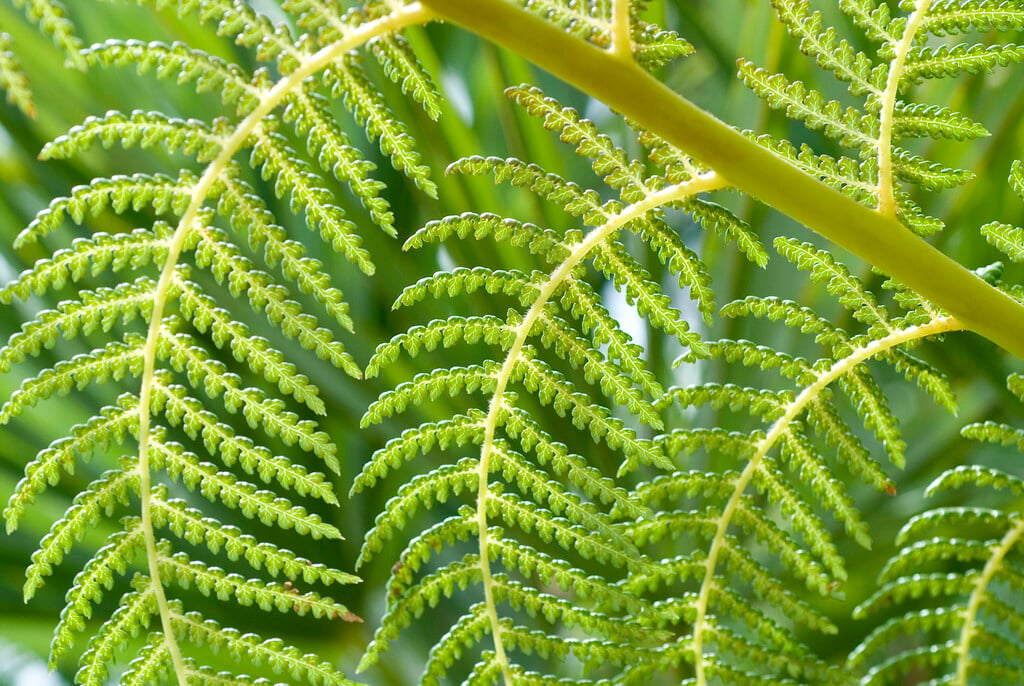Dicksonia antarctica
soft tree fern
An evergreen tree fern, but deciduous in colder areas, growing slowly to 4m in height, with a stout reddish-brown stem and a terminal rosette of arching, deeply divided, glossy dark green fronds to 3m in length
Synonyms
Balantium antarcticumSize
Ultimate height
2.5–4 metresTime to ultimate height
20–50 yearsUltimate spread
2.5–4 metresGrowing conditions
Moisture
Moist but well–drainedpH
Acid, NeutralColour & scent
| Stem | Flower | Foliage | Fruit | |
| Spring | Brown | Green | ||
|---|---|---|---|---|
| Summer | Brown | Green | ||
| Autumn | Brown | Green | ||
| Winter | Brown | Green |
Position
- Full shade
- Partial shade
Aspect
South–facing or West–facing or East–facing
Exposure
Sheltered Hardiness
H3Botanical details
- Family
- Dicksoniaceae
- Native to GB / Ireland
- No
- Foliage
- Evergreen
- Habit
- Tufted
- Genus
Dicksonia are evergreen tree ferns, but may be deciduous in cold areas, with a stout erect, trunk-like rhizome clothed in fibrous roots, and bearing a rosette of large, pinnately divided fronds at the apex
- Name status
Correct
- Plant range
- E Australia
How to grow
Cultivation
Grow outdoors in a moist but well-drained humus-rich soil. In hot, dry summers water the stem but avoid watering the crown in winter. Will require winter protection in colder areas. See overwintering plants outdoors: wrapping and tree fern cultivation for further advice
Propagation
Propagate by sowing spores as soon as ripe
Suggested planting locations and garden types
- Architectural
- Patio and container plants
- Flower borders and beds
Pruning
Dead or damaged fronds may be removed as necessary
Pests
Generally pest-free outdoors
Diseases
Generally disease-free outdoors
Get involved
The Royal Horticultural Society is the UK’s leading gardening charity. We aim to enrich everyone’s life through plants, and make the UK a greener and more beautiful place.
